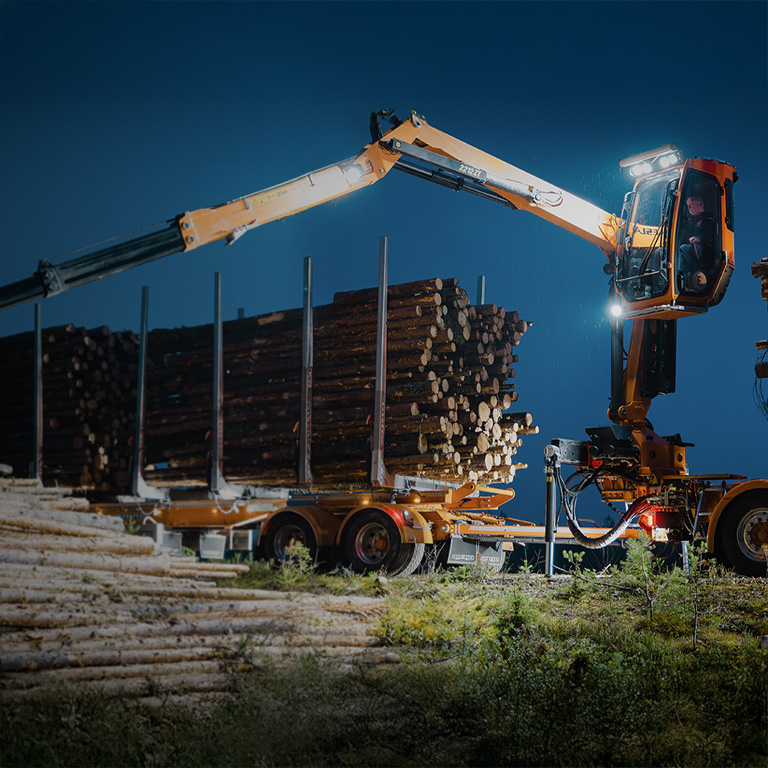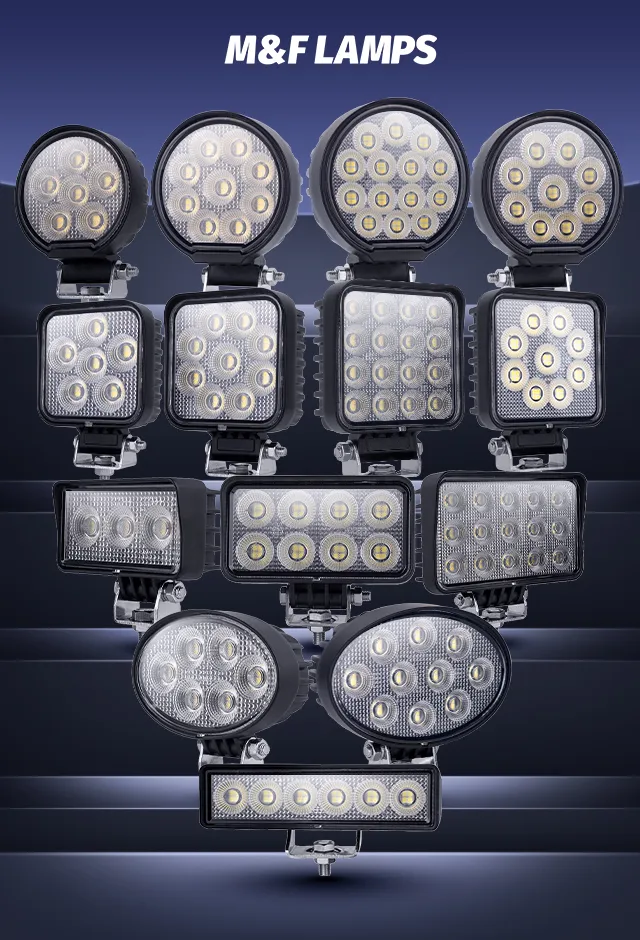Let’s be honest, when you’re dealing with multi-ton beasts of steel, whether it’s an excavator clawing at the earth, a forestry harvester deep in the woods, or a mining truck hauling colossal loads, visibility isn’t just important – it’s everything. We’ve all heard the horror stories, or maybe even squinted through a less-than-ideal lighting setup, trying to make out critical details as dusk settles or rain lashes down. Standard, off-the-shelf lights? Sometimes they just don’t cut it, do they? That’s where custom lighting solutions roar onto the scene, and believe me, they’re more than just a fancy upgrade.
For too long, lighting on heavy machinery was often an afterthought, a one-size-fits-all component. But the game has changed. We’re now in an era where tailoring the illumination to the specific machine, the specific task, and the specific environment isn’t just a luxury; it’s a fundamental driver of safety, productivity, and even operator morale. This isn’t just about bolting on an extra LED work light; it’s about intelligent design that understands the unique demands placed on heavy equipment.
So, what are we going to dig into? We’ll explore why settling for standard might be costing you more than you think, what actually makes a lighting solution “custom,” the undeniable advantages of going bespoke (especially with advanced LED headlight technology), and how to choose the right setup for your iron giants.

When “Good Enough” Just Isn’t: The Pitfalls of Standard Lighting
Think about it: your heavy machinery operates in some of the toughest conditions imaginable. Dust, debris, relentless vibrations, extreme temperatures, and often, the dead of night or the gloom of a storm. Is a generic floodlight, designed for who-knows-what application, really up to that challenge?
Often, the answer is a resounding “no.” Standard lights can lead to:
- Compromised Safety: Poorly distributed light creates blind spots, harsh glare can momentarily blind operators (or others nearby), and insufficient illumination can hide ground hazards or personnel. Imagine trying to precisely maneuver a massive boom with shadowy areas obscuring your target – it’s a recipe for disaster.
- Reduced Productivity: Operators who can’t see clearly work slower, make more mistakes, and experience greater fatigue. If your team is constantly battling poor visibility, you’re losing precious operational hours. It’s like trying to read a complex manual in a dimly lit room; you can do it, but it’s frustrating and slow.
- Increased Wear and Tear (on Operators and Lights!): Eye strain and fatigue from inadequate lighting take a toll on your most valuable asset: your people. And those generic lights? They’re often not built to withstand the brutal vibrations and impacts common in heavy machinery environments, leading to frequent replacements and downtime.
- One-Size-Fits-None: A lighting array that’s okay for a bulldozer on a wide-open construction site is likely terrible for a feller buncher in dense forest, which has totally different sightline requirements and shadow challenges.
This is where the conversation shifts, moving beyond just brightness to the quality and application of light.
What Puts the “Custom” in Custom Lighting Solutions?
So, what are we talking about when we say custom lighting solutions? It’s not just about picking a light from a slightly larger catalog. It’s a holistic approach that considers:
- Beam Patterns Tailored to Task: Do you need a wide flood to illuminate a broad work area, a penetrating spot beam to see far into the distance, or a combination? Maybe you need an elliptical beam for a specific spread, or a heated lens to prevent ice and snow buildup on an LED headlight. Customization means getting the light exactly where you need it, without wasteful spill or dangerous glare. For instance, a mining shovel needs intense, broad illumination at the dig face, while a grader might benefit more from angled lights that eliminate shadows along the windrow.
- Optimized Color Temperature: It’s not just about how bright, but what kind of bright. Different color temperatures (measured in Kelvin) can significantly impact visibility in various conditions. A crisp, white light might be great for general conditions, but a slightly warmer, amber-toned light can cut through dust, fog, or snow much more effectively, reducing reflective glare.
- Strategic Mounting and Placement: Where the light is mounted is as crucial as the light itself. Custom solutions involve analyzing the machine’s structure, its typical working angles, and potential obstructions to determine the optimal placement for maximum coverage and minimal shadowing. This often involves designing custom brackets or integrating lights seamlessly into the machine’s existing framework.
- Unmatched Durability and Resilience: Heavy machinery environments are brutal. Custom lighting often features significantly higher IP (Ingress Protection) ratings against dust and water, superior vibration dampening, impact-resistant lenses (like polycarbonate), and robust housings built from marine-grade aluminum or heavy-duty polymers. An LED work light designed for a skid steer working in a muddy, high-vibration agricultural setting will have different durability specs than one for a crane in a relatively cleaner port.
- Power and Integration Smarts: Custom solutions can be designed to integrate perfectly with the machine’s electrical system, ensuring stable power and preventing overloads. Some advanced systems can even tie into the machine’s CAN bus, allowing for smart controls, dimming capabilities, or even adaptive lighting that adjusts to speed or operational mode.
Essentially, it’s about engineering light to become an extension of the machine’s capability, rather than just an accessory.
The Unique Perspective: It’s About Operator Confidence
Here’s something not often discussed: the psychological impact of truly excellent lighting. When an operator has complete, clear visibility of their entire working environment, with no deceptive shadows or blinding glare, their confidence soars. They can work more decisively, with less second-guessing. This translates to smoother operations, better precision, and a significant reduction in mental fatigue. It’s the difference between driving a familiar road at night with high beams that perfectly illuminate every curve, versus navigating an unlit country lane with dim, flickering headlights. Which driver is more relaxed and in control?
The LED Revolution: Powering Custom Lighting
It’s almost impossible to talk about modern custom lighting solutions without focusing on LED (Light Emitting Diode) technology. LEDs have revolutionized what’s possible, especially for demanding applications like heavy machinery.
Why are LEDs the undisputed champions here?
- Incredible Durability: Solid-state construction means no fragile filaments to break. An LED work light or LED headlight can withstand shocks, vibrations, and impacts that would shatter traditional bulbs.
- Exceptional Lifespan: We’re talking tens of thousands of hours of operational life, dramatically reducing replacement frequency, maintenance costs, and downtime.
- Superior Energy Efficiency: LEDs convert a much higher percentage of electricity into light, rather than heat. This means less draw on the machine’s electrical system – crucial for equipment already powering multiple hydraulic and electronic systems.
- Instant, Bright Light: No warm-up time needed. LEDs provide full illumination the moment they’re switched on.
- Compact and Versatile: Their small size allows for more flexible and innovative light designs and placements.
When you combine the inherent benefits of LEDs with a custom design approach, you get a lighting solution that’s truly optimized for performance and longevity.
Choosing Your Path: Considerations for Selecting Custom Lighting
Ready to see the light (pun intended)? If you’re considering upgrading to custom lighting solutions for your heavy machinery, here are a few things to keep in mind:
- Analyze Your Specific Needs – Deeply:
- What type of machinery is it? (Excavator, dozer, loader, harvester, hauler, etc.)
- What are the primary tasks this machine performs?
- What are the typical operating environments? (Dusty, foggy, snowy, day/night, confined spaces, open areas?)
- What are the biggest visibility challenges your operators currently face? Talk to them! They’re your frontline experts.
- Think Beyond Lumens: While lumen output (a measure of brightness) is important, it’s not the only factor. Consider beam pattern, color temperature, light distribution, and glare control. Sometimes, a lower lumen light, strategically placed and patterned, is far more effective than a super-bright, poorly directed one.
- Durability is Non-Negotiable: Look for high IP ratings (e.g., IP67, IP68, IP69K), robust housing materials, impact-resistant lenses, and proven vibration resistance. That fancy new LED work light won’t do you much good if it conks out after a few rough shifts.
- Supplier Expertise Matters: Partner with a supplier who understands heavy machinery and can offer genuine customization, not just a slightly wider product range. Can they advise on placement? Do they understand the electrical demands of your equipment? Can they show you examples or case studies relevant to your industry?
- Consider the Long-Term ROI: Custom solutions, especially those featuring high-quality LED headlight and work light systems, might have a higher upfront cost. But factor in reduced downtime, lower maintenance, improved safety (fewer accidents), and increased productivity, and the return on investment becomes clear pretty quickly.
Imagine this scenario: You’ve got a crew working on a critical nighttime road repair. One excavator is equipped with standard, slightly mismatched floodlights. The operator is struggling, shadows are playing tricks, and there’s a constant worry about hitting unseen utilities. Another identical excavator, kitted out with a custom lighting solution – perhaps a combination of strategically aimed spot and flood LED work lights with an anti-glare design – is working smoothly and efficiently. The operator is confident, the site is clearly illuminated, and the job is progressing faster. Which scenario would you prefer for your operation?
The Future is Bright (and Smart!)
The evolution of lighting for heavy machinery isn’t stopping. We’re seeing trends towards even smarter custom lighting solutions:
- Adaptive Lighting: Systems that can automatically adjust brightness or beam pattern based on the machine’s speed, the task being performed, or even ambient light conditions.
- Integrated Camera/Sensor Systems: Lights that work in tandem with cameras and sensors to highlight hazards or provide operators with enhanced augmented reality views.
- Wireless Controls and Monitoring: Allowing for easier adjustments and providing feedback on light performance or potential maintenance needs.
What’s crystal clear is that investing in the right illumination is investing in the core of your operation. It’s about empowering your operators, protecting your assets, and pushing the boundaries of what’s possible, even when the sun goes down. So, maybe it’s time to look beyond that standard beam and explore how custom lighting solutions can truly transform the way your heavy machinery performs. It’s not just about seeing; it’s about succeeding.

